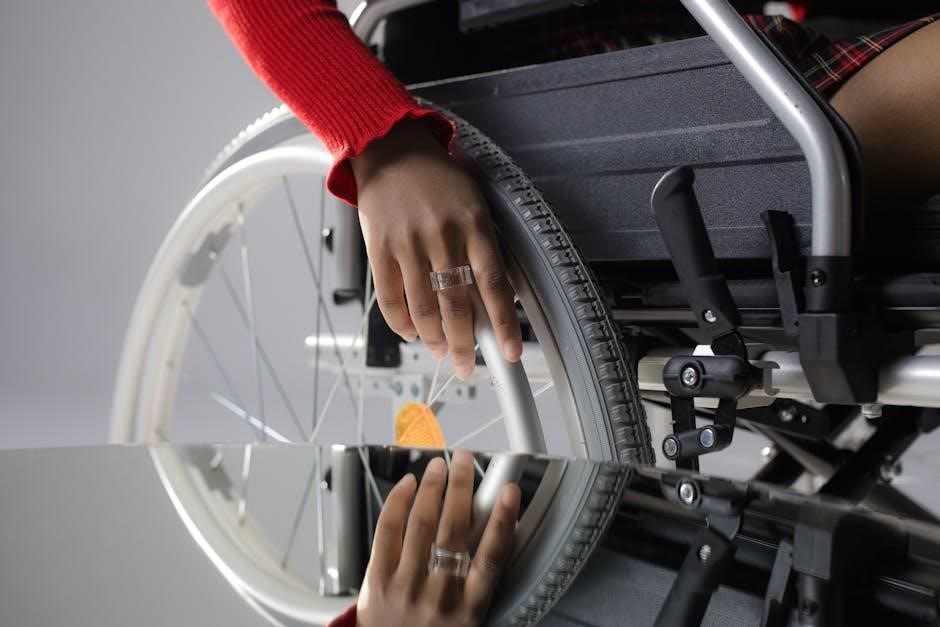Cuisinart Ice Cream Maker Instruction Book: A Comprehensive Guide
Discover delightful frozen desserts at home! This guide mirrors the rising popularity of countertop treat makers‚ offering detailed instructions for optimal enjoyment․

Understanding Your Cuisinart Ice Cream Maker
Welcome to the world of homemade frozen treats! Your Cuisinart ice cream maker is designed for simplicity and consistent results‚ much like the popular Ninja Creami gaining traction online․ This appliance transforms basic ingredients into creamy‚ delicious ice cream‚ sorbet‚ or frozen yogurt․
Before diving into recipes‚ familiarize yourself with the machine’s core function: rapidly freezing and churning a mixture․ The pre-frozen bowl is crucial‚ initiating the freezing process․ The dasher‚ or paddle‚ continuously mixes the ingredients‚ preventing large ice crystals from forming‚ resulting in a smooth texture․ Understanding this process is key to mastering your machine and achieving perfect frozen desserts every time․
This guide will walk you through each step‚ ensuring you unlock the full potential of your Cuisinart ice cream maker․
Model Variations & Identifying Your Unit
Cuisinart offers several ice cream maker models‚ each with slightly different features and capacities․ Identifying your specific unit is the first step to accessing the correct instructions and support․ Common variations include models with larger bowl capacities‚ digital timers‚ and pre-programmed settings – mirroring the feature sets seen in trending devices like the Ninja Creami․
Locate the model number on the bottom of the unit or in your original packaging․ This number is essential when contacting customer support or downloading specific documentation from the Cuisinart website․ Different models may have variations in assembly or operation‚ so referencing the correct manual is vital for optimal performance and safety․
Ensure you have the correct manual for your model before proceeding․
Key Components & Parts List

Your Cuisinart ice cream maker consists of several key components working in harmony to create frozen delights․ These include the outer bowl‚ the freezer bowl (the crucial cooling element)‚ the mixing paddle‚ and the motor base – similar in function to the components found in popular frozen treat makers․
A lid with a clear window allows you to monitor the freezing process․ The paddle assembly includes the paddle itself and the drive shaft‚ which connects to the motor․ Familiarize yourself with each part; understanding their function is key to proper assembly and operation․ A detailed parts diagram is usually included in your instruction manual‚ aiding in identification and potential replacement․
Keep this list handy for future reference!

Getting Started: Preparation & First Use
Before your first batch‚ ensure all parts are ready! Proper preparation‚ including thorough cleaning and understanding the freezing process‚ is essential for success․
Initial Cleaning & Sanitization
Prior to your inaugural ice cream creation‚ a meticulous cleaning and sanitization process is paramount․ Begin by disassembling all removable parts – the bowl‚ dasher‚ lid‚ and any accompanying accessories․ Wash these components in warm‚ soapy water‚ ensuring all surfaces are thoroughly scrubbed to remove any manufacturing residue or dust․
For the freezer bowl‚ avoid abrasive cleaners as they can damage the specialized coating․ A gentle dish soap and a soft sponge are ideal․ Rinse all parts completely under running water‚ verifying no soap remains․ To sanitize‚ a diluted bleach solution (1 tablespoon bleach per gallon of water) can be used‚ followed by a second thorough rinsing․
Finally‚ allow all components to air dry completely before reassembling and initiating the freezing process․ This initial step guarantees a hygienic and flavorful ice cream experience‚ free from unwanted tastes or contaminants․
Freezing the Bowl: Essential Steps
Achieving optimal freezing is crucial for successful ice cream making․ The freezer bowl must be thoroughly frozen before use – typically for a minimum of 16-24 hours․ Ensure your freezer is set to 0°F (-18°C) or lower․ Place the bowl directly on a flat freezer shelf‚ avoiding placement near the freezer door or vents where temperature fluctuations occur․
To verify complete freezing‚ shake the bowl gently․ If you hear no liquid sloshing‚ it’s likely ready․ A partially frozen bowl will result in soft‚ untextured ice cream․ Avoid forcing the freezing process; patience is key!
Remember‚ consistent and complete freezing is the foundation of creamy‚ delicious homemade ice cream․ A well-frozen bowl ensures efficient heat transfer during the churning process․
Understanding the Mixing Process
The Cuisinart ice cream maker utilizes a unique mixing process to transform liquid ingredients into frozen delights․ The dasher‚ powered by the motor‚ continuously scrapes the frozen mixture from the sides of the bowl while simultaneously incorporating air․ This aeration is vital for creating a light and fluffy texture‚ distinguishing homemade ice cream from store-bought varieties․
The mixing action prevents large ice crystals from forming‚ resulting in a smoother consistency․ The process typically takes 20-30 minutes‚ depending on the recipe and ambient temperature․
Observe the mixture’s transformation – it will gradually thicken and resemble soft-serve ice cream․ Understanding this process allows for adjustments and ensures optimal results․
Making Basic Ice Cream
Embark on your ice cream journey! This section details crafting classic flavors‚ from custard bases to delightful mix-ins‚ using your Cuisinart machine effectively․
Classic Custard Base Recipe
Creating a rich‚ smooth custard is fundamental to exceptional ice cream․ Begin with 2 cups of heavy cream and 1 cup of whole milk in a saucepan․ Gently heat over medium‚ avoiding a boil․ In a separate bowl‚ whisk together 3/4 cup of granulated sugar‚ a pinch of salt‚ and 6 large egg yolks until pale and slightly thickened․
Slowly temper the egg mixture by drizzling in about a cup of the warm cream‚ whisking constantly․ This prevents scrambling! Pour the tempered egg mixture back into the saucepan with the remaining cream․
Cook over low heat‚ stirring continuously with a wooden spoon‚ until the custard thickens enough to coat the back of the spoon – approximately 5-8 minutes․ Do not boil! Strain the custard through a fine-mesh sieve into a bowl․ Cover and chill thoroughly for at least 4 hours‚ or preferably overnight‚ before churning in your Cuisinart ice cream maker․
Adding Flavors & Mix-Ins
Elevate your ice cream with exciting flavors and textures! Once the custard base is churned to a soft-serve consistency‚ gently fold in your desired additions during the last few minutes of the freezing cycle․ For intense flavors‚ use extracts – a teaspoon of vanilla‚ almond‚ or peppermint is a great start․
Chopped nuts‚ chocolate chips‚ fruit purees‚ or cookie pieces add delightful texture․ Avoid adding large‚ frozen items directly‚ as they can strain the motor․ Instead‚ thaw slightly or chop into smaller pieces․

Approximately ½ to 1 cup of mix-ins per batch is a good guideline‚ adjusting to your preference․ Remember‚ less is often more – you want the flavors to complement‚ not overwhelm‚ the custard base․
The Freezing & Mixing Cycle Explained
Understanding the process is key to perfect ice cream! The Cuisinart ice cream maker utilizes a pre-frozen bowl and a paddle to simultaneously freeze and churn the custard base․ The paddle continuously scrapes the frozen mixture from the bowl’s sides‚ incorporating air and creating a smooth texture․
The typical cycle lasts 20-30 minutes‚ but this can vary depending on the recipe and ambient temperature․ Initially‚ the mixture will be liquid‚ gradually thickening into soft-serve․
Continue churning until it reaches your desired consistency․ For a firmer texture‚ transfer the ice cream to an airtight container and freeze for an additional 2-4 hours․
Beyond Basic Ice Cream: Expanding Your Recipes
Unleash your creativity! Explore diverse frozen treats – from refreshing sorbets and tangy frozen yogurts to rich gelato and dairy-free delights․
Sorbet & Sherbet Recipes
Dive into fruity refreshment! Sorbet‚ a dairy-free frozen delight‚ relies on fruit puree‚ sugar‚ and water for a vibrant‚ intense flavor․ Experiment with mango‚ raspberry‚ or lemon for stunning results․ Sherbet‚ however‚ includes a small amount of dairy – typically 1-2% – lending a creamier texture while still showcasing the fruit’s essence․
Preparation is key: Ensure your fruit is fully ripe for maximum sweetness․ For a smoother sorbet‚ strain the puree to remove seeds or pulp․ Adjust sugar levels to your preference‚ remembering that freezing dulls sweetness․ The Cuisinart ice cream maker excels at creating both‚ delivering a light and airy texture perfect for warm days․ Explore combinations like strawberry-basil sorbet or orange-ginger sherbet!
Frozen Yogurt & Dairy-Free Options
Healthy indulgence awaits! Frozen yogurt offers a tangy twist on classic ice cream‚ utilizing yogurt as the base for a lighter dessert․ Greek yogurt provides a thicker consistency and higher protein content․ For dairy-free enthusiasts‚ explore options like coconut milk‚ almond milk‚ or cashew cream – these create surprisingly creamy and flavorful alternatives․
Adaptation is simple: Substitute the dairy component in your favorite ice cream recipe with your chosen dairy-free alternative․ Be mindful that some plant-based milks may require stabilizers like guar gum for optimal texture․ The Cuisinart maker handles these variations beautifully‚ delivering a smooth‚ scoopable treat․ Experiment with fruit purees‚ chocolate‚ or vanilla for endless possibilities!
Gelato & Italian-Style Ice Cream
Experience authentic Italian flavors! Gelato differs from ice cream in its density and lower air content‚ resulting in a richer‚ more intense taste․ Traditional gelato recipes emphasize fresh‚ high-quality ingredients and often feature less cream than standard ice cream․
Achieving the perfect texture: The Cuisinart ice cream maker excels at creating gelato-style desserts․ Utilize a custard base with a higher proportion of milk to cream․ Slow churning is key to minimizing air incorporation․ Consider adding Italian flavorings like pistachio‚ hazelnut‚ or lemon zest․ Enjoy a truly authentic taste of Italy‚ crafted right in your kitchen!
Troubleshooting Common Issues
Resolve freezing‚ motor‚ or rotation problems! This section provides solutions for common issues‚ ensuring smooth operation and delicious results with your Cuisinart machine․
Ice Cream Not Freezing Properly
Is your ice cream mixture remaining too soft after the churning cycle? Several factors can contribute to this frustrating issue․ First‚ ensure the freezing bowl is thoroughly frozen – ideally for a full 24 hours‚ and placed at the back of the freezer where it’s coldest․
Check the freezer temperature; it should be 0°F (-18°C) or lower․ A warmer freezer won’t adequately freeze the bowl․ Also‚ verify your recipe’s fat content․ Lower-fat recipes often don’t freeze as firmly․
Proper chilling of the base before churning is crucial․ The mixture should be very cold․ Finally‚ avoid overfilling the bowl‚ as this can hinder proper freezing and mixing․ If problems persist‚ re-freeze the bowl and try again with a different recipe․
Motor Issues & Overheating
Experiencing motor slowdowns or overheating during operation? This often indicates excessive strain on the motor․ Ensure the mixture isn’t too thick or frozen before starting the churning process – a partially frozen base can significantly increase resistance․
Avoid continuous run times exceeding the recommended duration‚ typically 20-30 minutes․ Allow the motor to rest between cycles․ Check for any obstructions preventing the dasher from rotating freely․
Ensure the unit is placed on a stable‚ level surface to prevent undue stress․ If overheating persists‚ unplug the machine immediately and allow it to cool completely before attempting further use․ Contact customer support if issues continue․
Bowl Not Rotating
If the dasher isn’t turning within the frozen bowl‚ several factors could be at play․ First‚ verify the bowl is fully and properly locked into the base unit – an insecure connection prevents operation․
Next‚ check the mixture’s consistency; an overly thick or frozen mixture creates excessive resistance․ Ensure the mixture hasn’t frozen solid around the dasher․ Confirm the dasher paddle is correctly assembled and securely attached to the motor shaft․
Avoid overloading the bowl beyond the maximum fill line‚ as this strains the motor and hinders rotation․ If the problem persists‚ unplug the unit and inspect for any obstructions․
Maintenance & Care
Preserve your ice cream maker’s performance! Consistent cleaning and proper storage are vital for longevity‚ ensuring delicious frozen treats for years to come․
Cleaning Procedures After Each Use
Immediate cleaning is crucial to prevent residue buildup and maintain optimal performance․ Begin by unplugging the unit and disassembling removable parts – the bowl‚ dasher‚ and lid․ Hand wash these components in warm‚ soapy water; avoid abrasive cleaners or scouring pads that could damage the surfaces․
The freezer bowl requires gentle handling․ Never immerse it in water; simply wipe it clean with a damp cloth․ Ensure it’s thoroughly dry before reassembling․ The motor base can be wiped down with a slightly damp cloth‚ avoiding any water entering the electrical components․
Thorough drying is essential before storage to prevent mold or mildew․ Regularly inspect the dasher and lid for any lingering ice cream particles and address them promptly․ Consistent post-use cleaning guarantees a hygienic and efficient ice cream-making experience․

Long-Term Storage & Bowl Care

Proper storage extends the life of your Cuisinart ice cream maker․ Ensure all components are completely dry before storing․ The freezer bowl is the most sensitive part; store it in the freezer even when not in immediate use‚ maintaining its pre-chilled state for optimal performance․
The motor base‚ lid‚ and dasher can be stored in a cool‚ dry place‚ away from direct sunlight․ Avoid stacking heavy items on top of the freezer bowl‚ as this could cause damage․ Periodic inspection for any signs of wear or corrosion is recommended․
If storing for an extended period‚ consider placing a protective cover over the motor base․ Maintaining these simple storage practices ensures your ice cream maker remains ready for delicious creations whenever inspiration strikes․
Replacing Parts & Accessories
Maintaining your Cuisinart ice cream maker sometimes requires replacing worn or damaged parts․ Common replacements include the freezer bowl‚ dasher‚ and lid․ Genuine Cuisinart parts are recommended to ensure compatibility and performance‚ avoiding potential issues with third-party alternatives․

You can purchase replacement parts directly from the Cuisinart website‚ authorized retailers‚ or customer service․ Always have your model number handy when ordering to guarantee the correct fit․ Replacing a damaged freezer bowl is crucial if cracks or leaks develop․
Regularly check the dasher for wear and tear․ A faulty dasher can hinder proper mixing․ Proper part replacement ensures continued enjoyment of homemade frozen treats․

Safety Precautions & Warnings
Always prioritize safety! Disconnect the appliance before cleaning․ Never immerse the motor in water‚ and supervise children during operation for safe dessert making․
Electrical Safety Guidelines
To ensure safe operation‚ adhere to these crucial electrical guidelines․ Always verify your outlet voltage matches the appliance’s specifications‚ typically found on the base․ Never operate the Cuisinart ice cream maker with a damaged cord or plug; immediate replacement is essential․ Avoid using extension cords if possible‚ but if necessary‚ ensure it’s appropriately rated for the appliance’s wattage․
Do not operate the machine in wet or damp environments․ Keep the power cord away from heated surfaces and sharp edges․ Always unplug the unit when not in use‚ before cleaning‚ and during assembly or disassembly of parts․ Improper grounding can create a shock hazard‚ so ensure a properly grounded outlet is utilized․ If the appliance malfunctions or exhibits any electrical issues‚ discontinue use immediately and contact Cuisinart customer support․
Proper Usage & Avoiding Damage
Maximize your ice cream maker’s lifespan with these usage tips․ Never operate the unit without the bowl securely locked into place․ Avoid overfilling the bowl‚ leaving sufficient space for expansion during freezing – typically no more than ⅔ full․ Do not attempt to force the mixing arm or bowl; gentle operation is key․

Always allow the bowl to reach the proper frozen state before initiating the mixing cycle․ Avoid using metal utensils inside the bowl‚ as they can damage the non-stick surface․ Never immerse the motor base in water or any other liquid․ Regularly inspect all parts for wear and tear‚ replacing them as needed․ Improper use can void the warranty‚ so follow instructions carefully for consistently delicious results․
Warranty Information & Support
Your Cuisinart ice cream maker is covered by a limited warranty against defects in materials and workmanship․ The standard warranty period is typically one year from the date of original purchase‚ but may vary by region․ Please retain your proof of purchase for warranty claims․
For warranty service or support‚ visit the official Cuisinart website or contact their customer service department directly․ Online resources include FAQs‚ troubleshooting guides‚ and downloadable manuals․ Do not attempt to repair the unit yourself‚ as this will void the warranty․ Cuisinart’s dedicated support team is available to assist with any questions or concerns you may have regarding your ice cream maker․




















